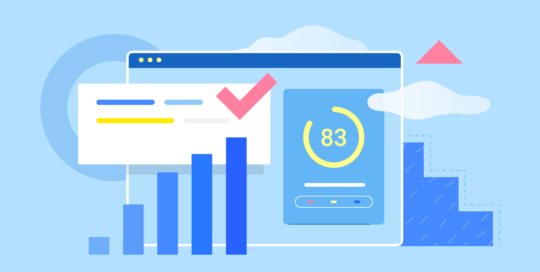How to Improve Your Google Rankings |Step-By-Step Guide

On-page SEO & off-page SEO
The terms on-page and off-page SEO categorize the SEO activities based on whether you perform them on the website
On-page SEO is everything you can do on the website – from the optimization of content through technical aspects.
Keyword research
#, Content optimization
#, Title tag optimization
#, Page performance optimization
#, Internal linking
The goal is to provide both perfect content and UX while showing search engines what the page is about.
Review Your Target Keywords
Take a second look at the keywords you are targeting. There are many reasons why you may want to consider targeting new keywords.
First of all, you may want to target a new customer audience.
In order to do that, you may want to target different or under-performing keywords.
It is good to do some testing by targeting different keywords and see which ones bring you in the best ROI.
Another reason to target new keywords is to give your SEO a boost. You may find that your rankings and your organic SEO traffic are not sufficient.
In that case, targeting new keywords can help give your site a much-needed boost.
Keyword Ranking for Transactional Keywords
The number one keyword research mistake is not spending enough time focusing on transactional keywords.
That’s because commercial keywords are the ones that drive revenue. To improve your search engine rankings and make money, you need to understand the difference between commercial and informational keywords to improve Google rankings.
If all of your keywords are informational, you will still generate organic traffic, but it may be difficult to convert those visitors to buyers or people who share on social media.
Shaping Your SEO Strategy In-Tune with Google’s Algorithm Updates
Have you ever wondered whether there is an ultimate strategy that you can rely on to rank highly on Google’s search engine results page?
Well, the simple answer is: yes, there is. But the fact of the matter is that it’s not so easy. Let me try and explain why, before we can get to the strategy.
Google’s search engine ethos is mainly defined by the fact that they want search engine users to receive the most relevant results for searches submitted, in the fastest time possible. Websites that fulfill this need in the best possible way rank higher and are prioritized in search engine results.
This ethos is quintessentially captured through an algorithm that is used to determine which websites deserve to be ranked highest, according to the priority of relevance to a user’s search engine query.
Consequently, by ranking higher on Google’s search engine pages for particular search engine queries, a website is likely to thrive because it would experience more traffic and hence, more conversions.
Every webmaster’s ultimate vision is, therefore, to rank number one on a search engine page for a popular search engine query related to the content on their website, irrespective of whether the website is informational or e-commerce or business-related.
The key to ranking highly on the search engine hence, lies with developing a strategy to observe Google’s ethos (Read: algorithm) because understanding the factors that affect the algorithm determines how well your website will be ranked.
Image Compression
Still talking about image sizes, once uploaded it is also good practice to have an image optimization software like Imagify running. This will further help compress images upon upload and can even resize them if they are over a certain pixel width and can significantly increase your page speed.
I like running this software because it can help reduce the size of previously uncompressed images that were uploaded and sometimes further reduce an image currently uploading without compromising the quality.
Alt Tags
An alt tag, also known as an alt attribute, or alt description are HTML code snippets that allow the search engines to understand what the image is about and also increase the user experience for those using screen readers.
Alt tags and alt text, all these terms are interchangeable, but they are the tag that tells Google exactly what your photo is about. Alt-text is an incredibly important part of SEO for images.
Describe the images using the alt text in a few descriptive words and include related keywords if possible. This tag is the alt= attribute and can be easily modified in the WordPress Media Library.
What Is Passage Ranking?
When you type a query into Google, a search algorithm reviews all content on a webpage to see if there is relevant information. Then Google gives you the links to pages. Here’s where the issues came in:
Web pages can be long, so even if Google gave you information relevant to your query, the answer to your query could be buried in the content of a whole page. Specific searches can be weakened as you scan a whole article when you just want the content of a specific passage of a website in the context of your search.
Google then presents the most relevant passage from the most relevant pages for your Google search. The new algorithm hones in on particular, single content to help you find exactly what you’re looking for.
Determine your current keyword ranking
Deciding to update old content randomly would be maddening. It’s smarter to focus on two things:
The priorities for your overall SEO goals
Keywords for which you’re currently trying to rank
We’ve blogged before about the importance of blogging on a topic. If you decide on 2-3 topics of critical importance to you, then look at the posts you’ve written on those topics. If you’re not ranking for posts in these areas, you’ll want to write new ones.
However, if you ARE ranking for posts, just not hitting page 1, you can revisit these posts and boost them to page 1.
To do this, we’re going to use one of our favorite SEO tools: SEMrush. If you’re serious about content marketing and SEO, consider SEMrush. We have a paid version, and it allows for the following functions (among many others).
Increase of Semantic Search and Intent Optimization
It used to be a strict focus on exact keyword matches was important for high-ranking content. But, Google didn’t like a lot of the keyword stuffing that resulted—leaving users with pages of fluffy keyword-filled garbage. With the algorithm changes, the value is now placed on content intent matching the user’s search intent.
This means you need to use those secondary keywords and semantic search to write with the full range of terms that match the intent of the search. The best way to approach this is to approach subjects your target audience is directly searching for. Optimize for content topics rather than placing the focus on keywords. With the increase in AI, it makes sense that content should be written for people and not bots. The bots are learning to look at content like their users will.
Domain Security
If you haven’t yet made the move from HTTP to HTTPS, now is definitely the time to do so. Your domain security links in with your trustworthiness — one of the main contributors to EAT rating and top factors Google uses to rank your content. Google doesn’t want to send its users to a site that may not protect their data or be otherwise harmful.
Having an SSL certificate is, of course, essential for e-commerce sites, but it’s now no longer an optional extra for more general sites that collect any kind of user data. At least those that want to rank.
And while we’re on the subject, maybe add some extra domain security from your domain provider. DDoS and CDN protection, as well as tools that look for SMTP anomalies, are a great idea.
Authority and Age of a Website
Domain age is not a sizeable SEO ranking factor, but attributes associated with how long your website has been around are.
Matt Cutts, a former Google Engineer, previously claimed that domain age has little to do with the ranking process stating, “The difference between a domain that’s six months old vs one-year-old is really not that big at all. As long as you’ve been around for at least a couple of months, you should be able to make sure that you can show up in search results.”
Despite this claim, many more recent, conclusive case studies demonstrate older domains benefit from SEO efforts more quickly than newer domains.
This is because older websites tend to have more backlinks, making the website seem more trustworthy to search engines. If your website is new, you can combat this by acquiring backlinks quickly (but also honestly).
Links will occur naturally over time if you’re producing solid content and promoting it well, which often means the older and more authoritative your domain, the more backlinks it will generate with each passing year.
But it’s not just links that make a difference here. Older domains tend to have libraries of content built up, and likely earn more clicks on name recognition alone. Google sees all this and factors it in when ranking.
This shouldn’t discourage anyone by any means; just be aware that a few dues must be paid before a newer domain gains a competitive edge. The best way to do that is by applying and sticking to the ever-evolving SEO best practices.
Making Decisions
Now that you have done your research and have a better understanding of your keywords, it is time to evaluate which keywords are the best 3-5 keywords per pillar page. By doing this, you’ll ensure your SEO strategy is far more focused. Instead of a shotgun approach with keywords, pillar pages allow you to focus more on the specific pages you’re attempting to rank for.
If you understand your pillar pages, your keywords, and if they’ve been properly researched, you’ll get a head start on creating an effective SEO strategy.
How Broad Is This Update?
The Page Experience algorithm update will affect all websites, in terms of results from regular web searches, Top Stories, and Google News. Google’s Webmaster Central Blog advised that the company will implement additional measurements of page experience signals, to further improve its ranking functionality.
The Google project leader for the Page Experience algorithm development has reportedly declined to discuss the weighting of each Page Experience signal. However, he did reportedly confirm that content quality will remain Google’s overarching priority in site rankings. Original, information-rich content will continue to rank high, even where a site’s page experience is inferior to others.
Losing Search Visibility to the Competition
For businesses, the goal in the search is to rank for industry keywords and terms that indicate a high likelihood of buyer intent. The problem is, there are a finite number of keywords related to a product or service, especially if it is a newer or niche category, and all of your competitors are pursuing those same keywords.
What makes organic SEO even more competitive is the reality that ranking on the first page of Google search results is the only goal that really matters for driving organic search traffic to your site since only 25% of searchers click through to the second page—yet there are no more than 10 possible organic listings to win on Page One of any Google SERP.
To put this in perspective, think of the dozens or perhaps even hundreds of brands in a particular industry sector, then imagine all of them in one large room playing a competitive game of musical chairs—but with only 10 possible seats to win.
Whenever Google updates its algorithm, the music stops, and every website frantically scrambles to sit in one of the 10 chairs. Many of the 10 winners who managed to grab a seat will still look with envy at the 3 best chairs (i.e. the top 3 ranked positions in search results) and strategize how to win those seats in the next round.
For top-ranked websites that have not focused on maximizing their site’s performance, Google’s Page Experience update will likely push them down and out of these valuable first-page search rankings, leaving them without a seat when the music stops—which leads to less organic traffic and fewer opportunities to generate leads.
Utilize link reclamation
Mentions of your content on other blogs can significantly improve your search engine rankings. However, sometimes companies mention your publications without linking back to you. If you monitor your online mentions, you can easily find companies that mentioned your content without a link.
Optimize for voice search. voice search is no longer growing, but more than 60% of people surveyed still said voice search is their preferred method of asking questions on their smartphone. Make sure those voice searchers find your business by incorporating likely voice search phrases into your website content—be sure to use full sentences phrased in a natural conversational style rather than single keywords.





















Leave a Comment